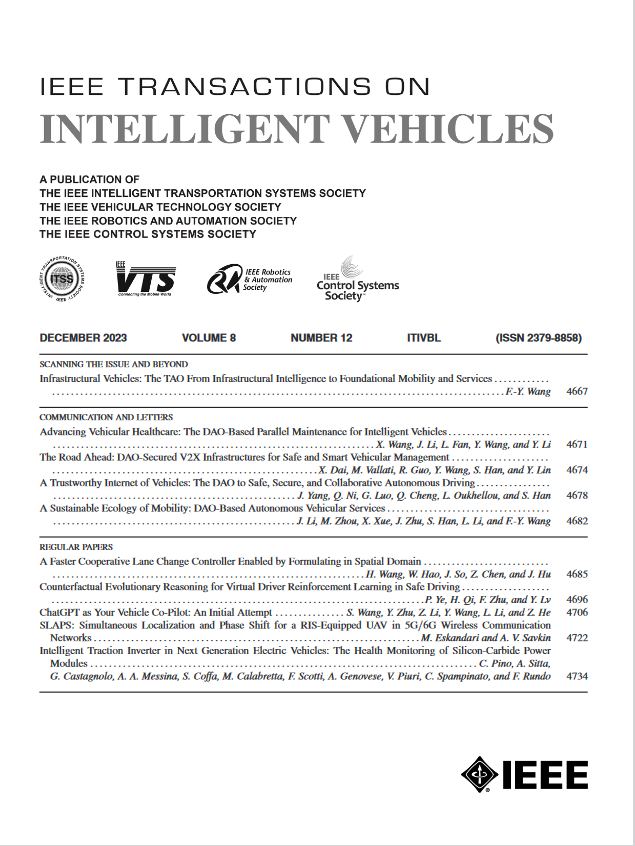Position Uncertainty-Integrated Potential Function for Collision Avoidance Systems Based on Model Predictive Control
IF 14
1区 工程技术
Q1 COMPUTER SCIENCE, ARTIFICIAL INTELLIGENCE
引用次数: 0
Abstract
In this article, an avoidance potential function with an uncertainty-integrated isopotential contour is proposed to perform vehicle collision avoidance with model predictive control (MPC) under the presence of uncertainty. A superquadric-based potential function describing an object is modified to reflect uncertainty, caused by detection sensor noise, using the suggested uncertainty area and surface-morphing function. In particular, the uncertainty area is designed such that sensor uncertainty expands the isopotential contour at the object boundary. Thus, the proposed potential function is robust against uncertainty in the object position. The surface-morphing function is designed to modify the isopotential contour at the object boundary by comparing the size of the uncertainty area and the object. Then, the proposed model is directly integrated into the cost function of MPC to generate the optimal steering angle and engine torque as control inputs. Specifically, the iterative linear quadratic regulator (iLQR) among MPCs is adopted to handle nonlinearity in the system and potential function. The proposed model is validated in the virtual test, which shows that the vehicle avoids both static and moving objects using the proposed model even when uncertainty exists without parameter adjustment.基于模型预测控制的避碰系统位置不确定性集成势函数
本文提出了一种具有不确定性积分等势轮廓的避碰势函数,用于存在不确定性情况下的模型预测控制避碰。利用建议的不确定面积和表面变形函数,对描述目标的超二次势函数进行了修改,以反映由检测传感器噪声引起的不确定性。特别地,设计了不确定区域,使传感器的不确定度扩展了物体边界处的等势轮廓。因此,所提出的势函数对目标位置的不确定性具有鲁棒性。设计了曲面变形函数,通过比较不确定区域和物体的大小来修改物体边界处的等势轮廓。然后,将该模型直接集成到MPC的成本函数中,生成最优转向角和发动机转矩作为控制输入。具体而言,采用mpc之间的迭代线性二次型调节器(iLQR)来处理系统和势函数的非线性。通过虚拟试验验证了该模型的有效性,结果表明,在不确定因素存在的情况下,车辆在不进行参数调整的情况下,也能有效避开静态和运动物体。
本文章由计算机程序翻译,如有差异,请以英文原文为准。
求助全文
约1分钟内获得全文
求助全文
来源期刊

IEEE Transactions on Intelligent Vehicles
Mathematics-Control and Optimization
CiteScore
12.10
自引率
13.40%
发文量
177
期刊介绍:
The IEEE Transactions on Intelligent Vehicles (T-IV) is a premier platform for publishing peer-reviewed articles that present innovative research concepts, application results, significant theoretical findings, and application case studies in the field of intelligent vehicles. With a particular emphasis on automated vehicles within roadway environments, T-IV aims to raise awareness of pressing research and application challenges.
Our focus is on providing critical information to the intelligent vehicle community, serving as a dissemination vehicle for IEEE ITS Society members and others interested in learning about the state-of-the-art developments and progress in research and applications related to intelligent vehicles. Join us in advancing knowledge and innovation in this dynamic field.
 求助内容:
求助内容: 应助结果提醒方式:
应助结果提醒方式:


